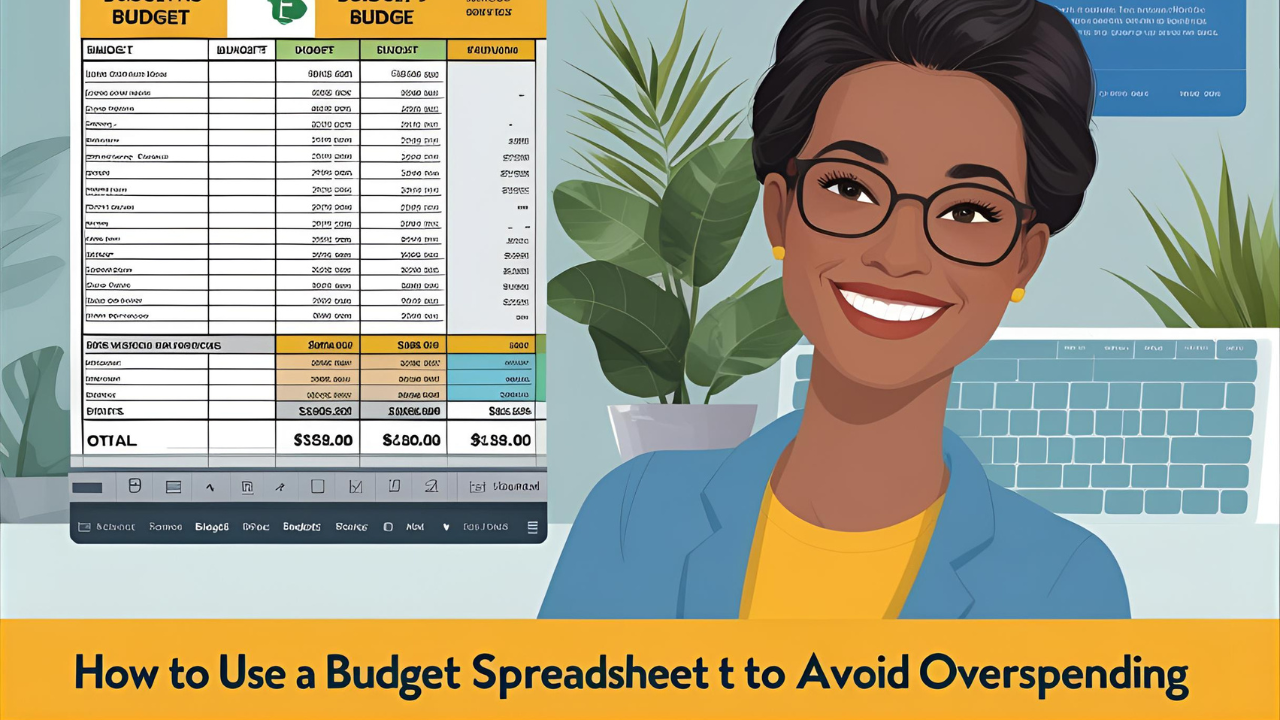Overspending is one of the most common challenges in personal finance—but it’s also one of the easiest to fix with the right tools. One of the simplest yet most effective ways to track your money and stay within your limits is by using a budget spreadsheet.
Whether you’re trying to cut down on unnecessary expenses or save for a specific goal, a well-structured spreadsheet can help you understand where your money goes, spot overspending patterns, and make smarter financial choices.
Table of Contents
- Why a Budget Spreadsheet Works
- Getting Started: Choose the Right Budget Spreadsheet Template
- Key Categories to Include in Your Spreadsheet
- How to Track Income and Expenses Effectively
- Tips to Stick to Your Budget and Avoid Overspending
- Free Spreadsheet Tools You Can Use
- Final Thoughts
Why a Budget Spreadsheet Works
A budget spreadsheet gives you a clear, visual overview of your income, expenses, and financial goals. Unlike mobile apps that automate everything, a spreadsheet requires you to engage manually—making you more aware of your spending habits.
It helps you:
- See exactly where your money is going
- Compare monthly income vs. expenses
- Adjust categories in real-time
- Spot overspending before it becomes a problem
This method is ideal for anyone who prefers customization and control over their finances.
Getting Started: Choose the Right Budget Spreadsheet Template
Before you dive in, decide how detailed you want your spreadsheet to be. You can:
- Use free templates in Microsoft Excel or Google Sheets
- Customize a blank sheet to match your needs
- Download a monthly or annual budget planner template online
👉 For example, the Consumer Financial Protection Bureau (CFPB) offers free and simple budget templates for personal use.
Look for templates that offer features like:
- Income and expense tracking
- Category breakdowns
- Automatic totals and balance columns
- Goal-setting sections
Key Categories to Include in Your Spreadsheet
To create an accurate picture of your finances, include the following sections:
1. Income
- Salary
- Freelance or side hustle income
- Benefits or support payments
- Other earnings (interest, dividends, etc.)
2. Fixed Expenses
- Rent or mortgage
- Utilities
- Insurance
- Loan payments
- Subscriptions
3. Variable Expenses
- Groceries
- Dining out
- Transportation
- Entertainment
- Clothing
4. Savings & Debt Repayment
- Emergency fund contributions
- Retirement savings
- Extra loan or credit card payments
Including these categories will help you spot which areas tend to exceed your budget and where you can cut back.
How to Track Income and Expenses Effectively
The key to making your spreadsheet work is consistency. Here’s how to stay organized:
- Update regularly – Ideally once a week
- Be honest – Record every purchase, even small ones
- Compare projected vs. actual spending
- Look for trends – Are you overspending on food or entertainment?
You can also color-code categories or use charts to make the data easier to digest.
Tips to Stick to Your Budget and Avoid Overspending
Even with the best spreadsheet, discipline is essential. Here are smart ways to stay on track:
- Set realistic limits – Don’t cut spending too aggressively
- Use cash for problem areas – Like dining or shopping
- Set spending alerts – Use bank or credit card notifications
- Review weekly – Make adjustments before the month ends
- Celebrate milestones – Like staying under budget or hitting savings goals
Free Spreadsheet Tools You Can Use
Here are a few free and reliable tools to get started:
- Google Sheets Budget Templates – Cloud-based, easy to share, and customizable
- Microsoft Excel Budget Templates – Ideal for more advanced users
- CFPB Budget Worksheet – A great beginner-friendly printable option
- Vertex42.com – Offers a wide range of free personal finance templates
All of these are AdSense-safe resources with proven credibility and no hidden costs.
Final Thoughts
A budget spreadsheet doesn’t just track your money—it transforms the way you think about it. By making your income and expenses visible, you’re less likely to overspend and more likely to stay focused on your financial goals.
With the right template, a few minutes each week, and a commitment to consistency, you can take full control of your budget and spending habits—without needing any expensive software or financial planner.

